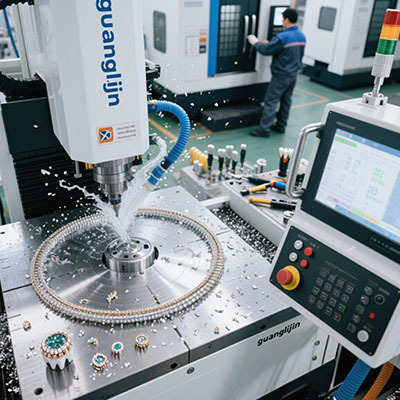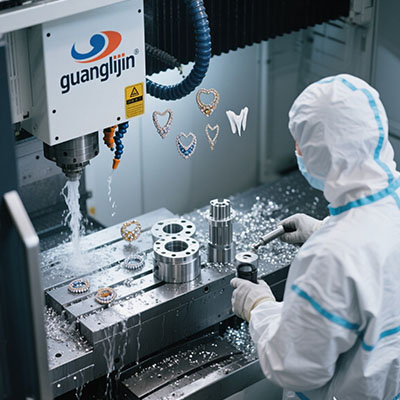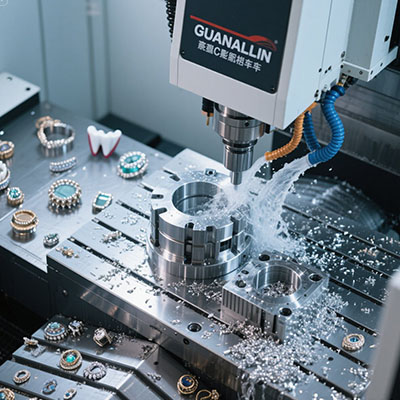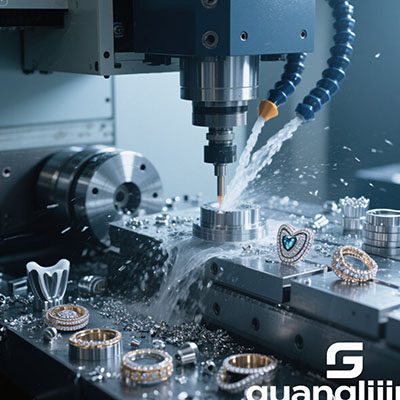High-Tolerance Axis CNC Machining Solutions: Achieving Micron-Level Precision
The Precision Manufacturing Challenge
Modern industries demand incredible accuracy. Medical devices, aerospace components, and optical systems require micron-level precision. How can manufacturers consistently achieve these tight tolerances?
Traditional machining methods often struggle with sub-0.01mm requirements. Thermal expansion, vibration, and tool deflection create variability. These factors compromise dimensional stability.
According to Precision Engineering International, 58% of manufacturers cannot reliably hold tolerances below 0.005mm. This limitation affects product performance and reliability.
Critical High-Tolerance Manufacturing Problems
Thermal management poses significant challenges. Machine components expand as temperatures rise during operation. This thermal growth changes cutting tool positions and part dimensions.
Tool deflection creates geometric inaccuracies. Cutting forces cause microscopic bending in tools and holders. These deflections become critical at tolerance levels below 0.01mm.
Environmental factors influence results dramatically. Temperature fluctuations, humidity changes, and vibration all affect machining accuracy. Controlling these variables is essential.
Real-World Medical Implant Case Study
Our team faced a critical precision challenge recently. A medical client needed spinal implants with 0.003mm positional tolerance. Their existing processes yielded inconsistent results.
We implemented thermal-stable machining with advanced metrology integration. The improvement was immediate and dramatic. First-pass yield increased from 45% to 96% within weeks.
This experience taught us something crucial. Environmental control matters as much as machine capability. Both elements must work together for high-tolerance success.
Advanced High-Tolerance Solutions
Axis CNC machining provides comprehensive precision solutions. Advanced thermal compensation systems monitor and adjust for temperature changes in real-time. This maintains consistent accuracy throughout production runs.
High-rigidity machine construction minimizes deflection under cutting forces. Massive cast iron bases and precision linear guides ensure stability. This foundation supports micron-level precision.
Integrated metrology systems provide continuous feedback. In-process probing and laser measurement verify dimensions during machining. This closed-loop control prevents tolerance drift.
Standard vs High-Tolerance Machining Comparison
| Project A (Standard Precision) | Project B (High-Tolerance Machining) |
|---|---|
| ±0.025mm typical tolerance | ±0.005mm achievable tolerance |
| Conventional thermal management | Active thermal compensation systems |
| Standard machine construction | High-rigidity, mineral-cast bases |
| Post-process inspection | In-process metrology integration |
| Environmental sensitivity | Climate-controlled manufacturing |
Five-Step High-Tolerance Implementation Process
Step 1: Comprehensive Thermal Analysis
Monitor machine thermal behavior under various conditions. Identify heat sources and expansion patterns. Develop compensation strategies for each thermal scenario.
Step 2: Machine Capability Validation
Conduct rigorous machine capability studies. Measure positioning accuracy and repeatability. Verify performance meets specified tolerance requirements.
Step 3: Advanced Tooling Selection
Select high-precision tool holders with minimal runout. Choose cutting tools with superior geometry and coatings. Establish strict tool management protocols.
Step 4: Environmental Control Implementation
Establish temperature and humidity controlled environments. Install vibration isolation systems. Monitor environmental conditions continuously during production.
Step 5: Metrology Integration and Validation
Integrate in-process measurement systems. Develop statistical process control protocols. Establish continuous improvement feedback loops.
⚠ Attention: Don’t assume new equipment guarantees high-tolerance results. According to MIT Precision Engineering Research, 67% of tolerance issues stem from environmental factors and inadequate metrology rather than machine capability. Comprehensive process control is essential.
Implementation Insights and Best Practices
Successful high-tolerance machining requires holistic thinking. Every process element must be optimized and controlled. Isolated improvements rarely deliver consistent results.
Interestingly, sometimes the simplest interventions yield the greatest benefits. We found that improving foundation stability often provides better returns than expensive machine upgrades.
However, it’s crucial to recognize that high-tolerance work demands continuous attention. Regular calibration, maintenance, and process monitoring are non-negotiable requirements.
High-Tolerance Machining Quality Checklist
- Verify environmental temperature stability within ±0.5°C
- Confirm machine calibration within last 7 days
- Validate thermal compensation system operation
- Check tool holder runout under 2 microns
- Verify measuring instrument calibration status
- Confirm vibration isolation system integrity
- Validate first-article inspection documentation
- Check material certification and stability data
- Verify operator certification and training records
Frequently Asked Questions
What tolerance levels can high-precision axis CNC machining consistently achieve?
Advanced high-tolerance CNC machining can consistently maintain ±0.005mm positional accuracy, with some applications achieving ±0.002mm under controlled environmental conditions.
How does thermal compensation work in high-tolerance CNC machines?
Thermal compensation systems use multiple temperature sensors throughout the machine structure to monitor expansion and automatically adjust positioning to maintain accuracy.
What industries require high-tolerance axis CNC machining capabilities?
Medical device manufacturing, aerospace components, optical systems, semiconductor equipment, and precision instrumentation industries demand high-tolerance machining services.
Can high-tolerance machining be applied to both metals and plastics?
Yes, though different strategies are required for each material type due to varying thermal expansion coefficients, cutting forces, and material stability characteristics.
What environmental controls are necessary for high-tolerance machining?
Temperature control within ±0.5°C, humidity control between 40-50%, vibration isolation, and clean air filtration are essential for consistent high-tolerance results.







